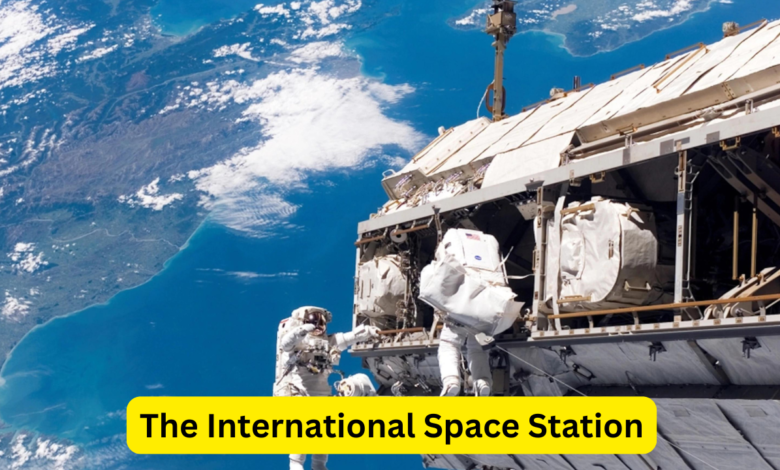The International Space Station

The International Space Station (ISS) stands as a testament to human ingenuity and international collaboration in the realm of space exploration. Since its inception, the ISS has been a hub for scientific research, technological innovation, and international cooperation. In this article, we delve deeply into the ISS’s history, its current operations, and its future prospects, providing a thorough analysis that aims to surpass existing coverage on the subject.
Introduction to the International Space Station
The International Space Station represents one of the most significant achievements in human spaceflight. This modular space station orbits Earth at an average altitude of approximately 420 kilometers (260 miles) and serves as a research laboratory in low Earth orbit. It is a joint project involving space agencies from the United States, Russia, Europe, Japan, and Canada.
Historical Context and Development
The concept of a space station has evolved over decades. The ISS project began as a series of collaborative efforts and technological advancements:
- 1998: The first module, Zarya, was launched by Russia, marking the beginning of the ISS assembly.
- 2000: The Unity module, the first American contribution, was added, linking the initial components.
- 2001-2011: Several modules from various international partners were added, expanding the station’s capabilities and living space.
The ISS’s Current Structure and Components
Today, the ISS comprises multiple interconnected modules and components, each serving specific purposes:
- Habitation Modules: Such as the Zvezda Service Module and Harmony Module, provide living quarters and workspace for astronauts.
- Laboratories: Including the Destiny Laboratory (USA) and Columbus Laboratory (Europe), where scientific experiments are conducted.
- External Trusses and Arrays: Like the S3/S4 Truss and Solar Arrays, which support the station’s structural integrity and power needs.
Scientific Research and Experiments
The ISS is renowned for its scientific research capabilities. The microgravity environment allows scientists to conduct experiments that are not possible on Earth. Research areas include:
- Biotechnology: Studying the effects of microgravity on biological organisms to understand growth, development, and disease mechanisms.
- Materials Science: Investigating how materials behave in space, leading to innovations in manufacturing and construction on Earth.
- Astronomy and Astrophysics: Observing cosmic phenomena and conducting experiments to understand the universe’s fundamental properties.
International Collaboration and Contributions
The ISS symbolizes international cooperation in space exploration. Key partners include:
- NASA: The United States’ space agency, responsible for many of the ISS modules and the majority of its crewed missions.
- Roscosmos: Russia’s space agency, which provides critical modules, propulsion systems, and crewed missions.
- ESA: The European Space Agency contributes laboratory modules and research expertise.
- JAXA: The Japan Aerospace Exploration Agency offers advanced technology and the Kibo laboratory module.
- CSA: The Canadian Space Agency is known for the Canadarm2, a crucial robotic system for station operations.
Current Missions and Crewed Operations
The ISS hosts a rotating crew of international astronauts who live and work in space for extended periods. Each crew typically spends about six months aboard the station, performing experiments, maintaining the station, and preparing for future missions. Recent missions include:
- Expedition 68: Focused on scientific research and station maintenance, involving astronauts from NASA, Roscosmos, and ESA.
- Commercial Crew Program: NASA’s initiative to partner with private companies like SpaceX and Boeing to transport astronauts to and from the ISS, enhancing the station’s accessibility.
Technological Innovations and Upgrades
Technological advancements continue to enhance the ISS’s capabilities:
- Solar Arrays: Upgrades to the solar arrays have improved power generation and efficiency.
- Robotic Systems: Enhanced robotics, including the Canadarm3, are planned to support station operations and future missions.
Future Prospects and Goals
Looking ahead, the ISS faces several challenges and opportunities:
- Sustainability: Plans are underway to extend the ISS’s operational life beyond its original 2024 end date, potentially to 2028 or beyond.
- Commercialization: The ISS is expected to transition towards more commercial use, with private companies playing a larger role in research and development.
- Lunar Gateway: Future missions will focus on the lunar orbiting Gateway project, which will serve as a stepping stone for Mars exploration.
Educational Outreach and Public Engagement
The ISS is not only a hub for scientific research but also a powerful tool for educational outreach. Through various programs, educational institutions and the public have the opportunity to engage with space science. Initiatives such as the NASA’s Earth and Space Science Education program provide resources and interactive experiences for students of all ages. These programs aim to inspire the next generation of scientists, engineers, and explorers by connecting them with the real-world research conducted on the ISS.
Educational initiatives also include live video feeds and social media interactions, allowing students to witness daily life on the ISS and engage directly with astronauts. These efforts not only enhance public understanding of space but also stimulate interest in STEM (Science, Technology, Engineering, and Mathematics) fields, encouraging young people to pursue careers in these vital areas.
Economic Impact and Industry Growth
The ISS has had a significant economic impact, fostering growth in various industries and technologies. By serving as a testbed for new technologies and systems, the ISS has contributed to advancements in fields such as robotics, telecommunications, and life support systems. These technologies have applications beyond space, benefiting industries on Earth. For instance, innovations developed for the ISS have led to improvements in medical devices, materials science, and environmental monitoring.
Additionally, the commercialization of space and the growing role of private companies are transforming the economic landscape of space exploration. Companies like SpaceX and Boeing are not only providing transportation to the ISS but also developing new technologies and business models that will shape the future of space travel and exploration. The ISS’s role as a testbed for these innovations is crucial in advancing both space and terrestrial industries.
Challenges and Mitigation Strategies
Operating the ISS involves numerous challenges, from managing the harsh environment of space to ensuring the safety of its crew and equipment. One significant challenge is space debris, which poses a risk to the station’s structural integrity. The ISS regularly performs “debris avoidance maneuvers” to mitigate this risk and ensure the safety of its occupants.
Another challenge is maintenance and repair. Over the years, the ISS has required numerous repairs and upgrades to its systems. The international partnership has proven essential in addressing these issues, with teams of engineers and astronauts working together to solve problems and implement solutions. Future missions and upgrades will continue to focus on improving the station’s resilience and operational efficiency.
The ISS’s Legacy and Inspiration for Future Missions
The International Space Station’s legacy extends beyond its contributions to science and technology. It represents a successful model of international cooperation in space, demonstrating what can be achieved when nations work together towards a common goal. The collaborative spirit of the ISS serves as an inspiration for future space missions and projects, including plans for lunar exploration and Mars colonization.
As we look to the future, the ISS will continue to inspire innovation and foster international partnerships. Its role in paving the way for deeper space exploration and commercial spaceflight is a testament to human ambition and the pursuit of knowledge. The ISS’s ongoing research and achievements will undoubtedly influence the next generation of space exploration, ensuring that its impact will be felt long into the future.
Conclusion
The International Space Station stands as a beacon of human collaboration and scientific progress. Its continued operation and the innovations stemming from its research will undoubtedly pave the way for future advancements in space exploration and technology. As we look to the future, the ISS remains a crucial element in our quest to understand and explore the universe.





One Comment